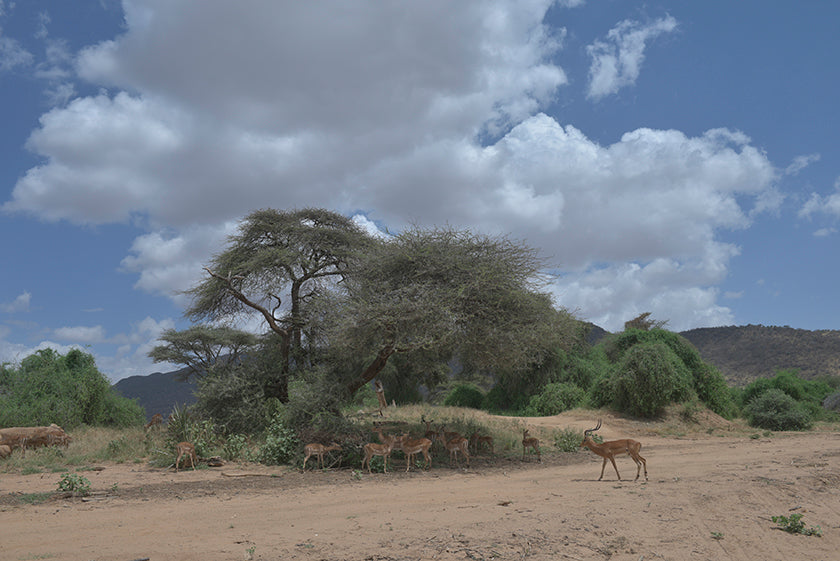February Samburu Trip by Adele
Posted by Mary Bosibori on
 And Samburu was such a wonderful experience, how the people wear their beautiful Sukas as well as the amazing necklaces and bracelets. I was amazed at how stunning they look, as you can tell from the photos I got back, a lot of them.
And Samburu was such a wonderful experience, how the people wear their beautiful Sukas as well as the amazing necklaces and bracelets. I was amazed at how stunning they look, as you can tell from the photos I got back, a lot of them.

Beadwork is their main activity, with the women spending most of their time in creating amazing pieces.

 Surprisingly, these ornaments have meaning, with a specific gold-plated ear-ring a reserve for the married women (one 18-year old, with 3 children had them on).
Surprisingly, these ornaments have meaning, with a specific gold-plated ear-ring a reserve for the married women (one 18-year old, with 3 children had them on).

The men also wear them, and with each age group, a specific piece with a specific meaning. The men specialise in making spears and clubs as well as raring their livestock.

Their Sukas also have meaning, and have to be worn in order, blue (for the sky) on top, white (for peace) in the middle and pink (for the semi-arid land) at the bottom.


They are headed by a village elder, without whom no decision can be made and they savour a mixture of milk and fresh blood as their staple food.

The main challenge there is lack of water and they have to walk several miles to get fresh water for them and their livestock, but they are a friendly bunch, welcoming us with song and dance was such a wonderful sight.


Living close to the Samburu game reserve, where we also had a glimpse of some of the wild animals over the course of our trip, we heard chilling tales as well as tales of bravery of their encounters with the wild animals, and their makeshift homes, as well as simple villages and their traditional cooking methods, showed a stunning life, for a wonderful people.


The people of Samburu are indeed very friendly, welcoming, interesting with an admirable sense of fashion.




